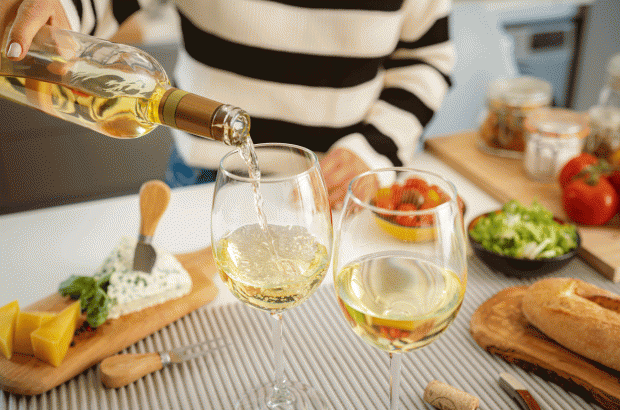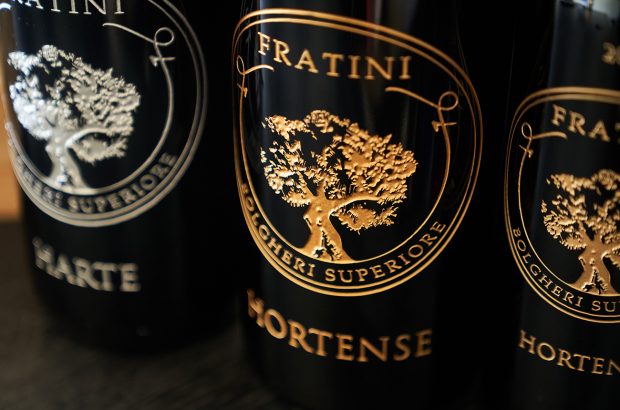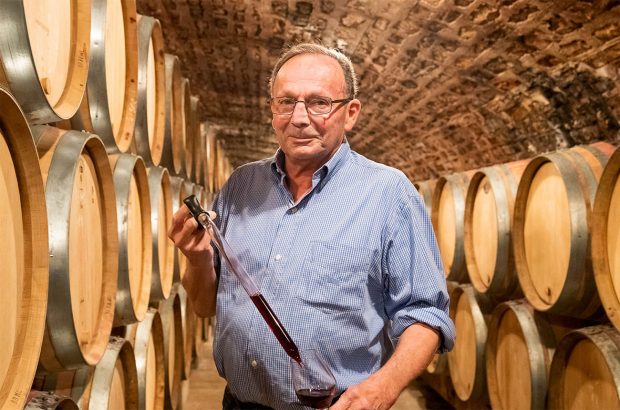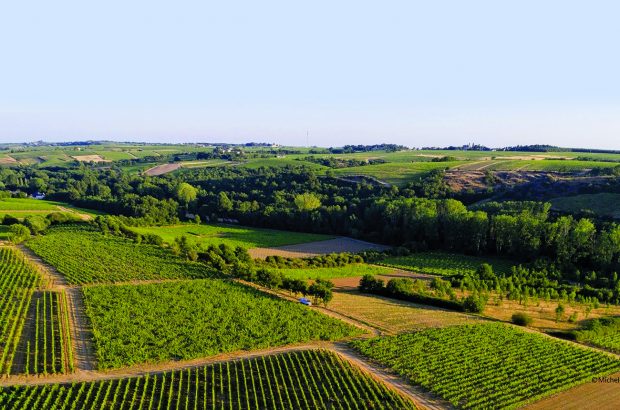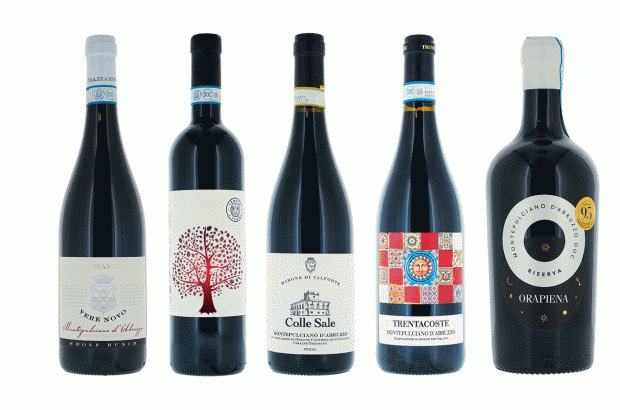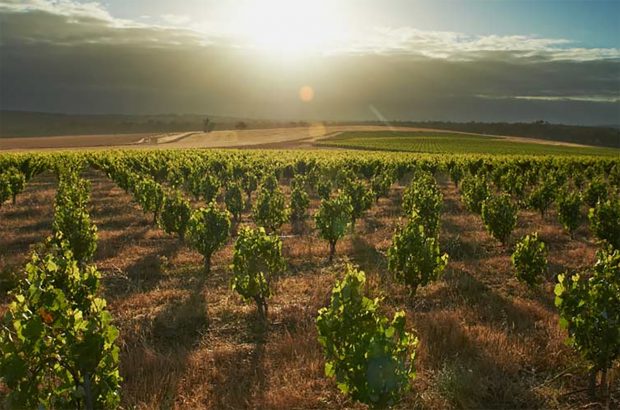- Policy of replanting and grading grapes early on.
- Important elements: site selection and man’s intervention.
- Syrah provides the basis of the two top cuvées.
- An eclectic range of wines are produced.
Minervois covers some 36,000 hectares (ha) extending between the Aude and Hérault départements. It is bounded to the north by the foothills of the Massif Central and to the south by the Canal du Midi with the city of Carcassonne to the west and Narbonne to the east. Within this area 18,000ha are delimited as appellation Minervois, of which 4,500ha are officially under production. This figure represents a mere 10 per cent of the region’s total output, with 60–70 per cent being provided by vins de pays and the remainder labelled as vin de table.
Minervois has undergone a massive upheaval over the last 20 years. Appellation status was granted in 1985 and, from the mid-1970s onwards, there has been considerable investment in winery equipment and restructuring of the vineyards. Certain producers and cooperatives, like those at La Livinière and Peyriac-Minervois, started implementing a policy of replanting and grading of grapes early on, while others are still rushing to catch up. The Cave des Coteaux du Haut-Minervois, for instance, is offering subsidies to incite members to replant to the coop’s specifications. Overall, the ‘improving’ grape varieties Syrah, Grenache and Mourvèdre have gradually been replacing the ubiquitous Carignan and should by this year, according to the appellation décret, represent a minimum 60 per cent of plantings with Carignan relegated to a maximum 40 per cent. This target looks like being met, the latest figures show that Carignan represents 35 per cent of plantings, Syrah 32 per cent, Grenache 20 per cent, Cinsaut seven percent and Mourvèdre five percent. A large volume of Minervois falls into the soft, warmly fruity, easy drinking, value for money bracket. The change in the balance of grape varieties, carbonic maceration for the Carignan to provide a livelier fruit character and the introduction of destemming and temperature control have all contributed to the development of this amenable style of wine.Finding wines of more serious character has posed a greater problem, but a number of estates are now beginning to demonstrate that Minervois can indeed shift up another gear. A higher percentage of Syrah and Grenache in the blend, defined site selection, reduced yields, a longer period of maceration and some oak ageing is helping to provide wines of a different complexion. These have extra body, a sweet, red berry and plum intensity, a dash of spice and thyme and a surprisingly fresh finish. They are worthy of ageing four to five years.
Despite being mostly a red wine area there is a tiny amount of white Minervois. This is made from Macabeo, Marsanne, Bourboulenc, Grenache, Roussanne and Rolle or Vermentino. These provide a variety of blends, the best of which are soft, fleshy and aromatic with sufficient acidity to accord balance. The use of oak for fermentation at one or two estates has added a layer of weight and honeyed complexity. There is a small production of later harvested sweet wine known as Minervois Nobles (although appellation status has yet to be accredited). Roussanne, Marsanne and Grenache are the favoured grape varieties, giving an aromatic spectrum of pear, quince and citrus fruits and a wine of around 15 degrees alcohol and 135 grams/litre of residual sugar.
Returning to the qualitative theme for the red wines there are, as usual, two important elements: site selection and man’s intervention. The Minervois forms a large south facing amphitheatre which can be split into zones according to climatic influence, soil, exposure and altitude. The east, where vineyards are no more than 20km from the sea, has a Mediterranean climate, whereas in the west, near Carcassonne, an Atlantic influence pervades just enough to increase precipitation and take some of the sting out of the weather. In the centre the rainfall is limited to the point of stressing the vines, the soils are a mix of stoney limestone and marl and the hillslopes vary from 50 to 400m.
The new appellation of Minervois La Livinière falls into this central zone. Located in the hills of the Petit Causse, the appellation has been delimited to 2,600ha, grouping six communes including the eponymous La Livinière. The rocky soils, hilly terrain and warm, dry climate are favourable to viticulture. Producers in this area were among the first to take measures to improve their wines: tighter regulations reflect this approach. Syrah, Grenache and Mourvèdre must represent a minimum 60 per cent of plantings, yields have been lowered to 45 hectolitres/hectare, the wine has to age for a minimum 15 months and two official tastings have been imposed to maintain quality. Around 800,000 bottles will be produced from the inaugural 1998 vintage.
As president of the La Livinière coop for a number of years, Maurice Piccinini was one of the prime instigators of the new village appellation. He has since withdrawn from the coop and now runs the 20ha Domaine Piccinini with his son, Jean-Christophe. Syrah now represents 70 per cent of plantings: Grenache and Carignan provide the complement, the latter vinified by carbonic maceration. ‘The Carignan can be fruity and aromatic when young, but is honestly of limited interest compared to the other varieties,’ says Jean-Christophe. The various cuvées produced here are all Syrah dominated, in particular the dense and finely structured Cuvée Line et Laetitia which undergoes some barrel ageing. The regular Minervois Tradition is supple and spicy.
In the neighbouring commune of Siran, Gilles Chabbert of the Domaine des Aires Hautes is one of the younger generation who are helping to gain Minervois wider recognition. His first vintage and the first to be bottled at the domaine was the 1991, but the vineyard has been steadily replanted since the 1970s. The quality of the fruit is exceptional and Gilles has introduced destemming, pigeage, a longer period of maceration and ageing in oak barrels. Syrah provides the basis of the two top cuvées, the Cuvée Selection and Clos de l’Escandil, with more in the latter and up to 22 months ageing in oak barrels.
In the garrigue hills behind the village of Siran, Daniel Domergue and his wife Patricia of the Clos Centeilles provide another view of the region. An independent spirit, Daniel Domergue rails against the confines of the appellation system, the technocracy of the INAO and what he sees as the replacement of Carignan with overoaked Syrah, but he knows how to produce wines of quality and character. Yields are kept low: ‘We produce an average 600 hectolitres per year from 14ha, whereas the previous owner turned around 1,400 hectolitres from 11ha,’ explains Patricia Domergue. Since the domaine was purchased in 1990 the Cinsaut has been steadily trained on to wires to give a better spread to the foliage and the Mourvèdre, which is not particularly well adapted to this sector, has been put on a system of lyre trellising to advance maturity.
From the various grape varieties an eclectic range of wines are produced. Daniel Domergue is no fan of Carignan, but by using carbonic maceration makes the wildly fruity if one dimensional Carignanissime. Cinsaut is the grape the Domergues define as historically the true variety of the Languedoc, capable of producing wines of a certain finesse. Low yields, destemming, a long period of maceration and pigeage enable them to push this variety to the limit. The Capitelle de Centeilles, a 100 per cent Cinsaut, is full of plummy, leathery fruit in youth with a mineral freshness and capable of ageing six to seven years. The Clos Centeilles is a more robust, powerful wine, a classic blend of Syrah, Grenache and Mourvèdre.
Further west, André Iché of Château d’Oupia provides a traditional benchmark. His vineyards are on a range of slopes known as the Serre d’Oupia, with Syrah, Carignan and Grenache, in that order, providing the basis of most of the blends. The wines are deeply coloured, rich, ripe and fruity with an extra edge of intensity, structure and balance in the top cuvée, Nobilis. Another improving region is the Balcons de l’Aude, a ring of clay-limestone hills with a southerly and easterly exposure overlooking the River Aude. Jean-Pierre Orosquette and his family have built the 96ha Château La Grave into one of the sure-fire values of this area. The red wines are Syrah dominated, supple, spicy and attractive early on. There are also some modern-styled, aromatic whites produced at the domaine. Jean-Claude Pujol is one of the younger producers gaining a reputation for his rich, ripe, concentrated reds, while at Château Fabas, Roland Augustin is investing for the future. Champenois in origin, he purchased the property in 1996 and has fully committed himself to the estate and appellation.
The uncrowned king of Les Balcons, though, is Jean-Louis Poudou of the Domaine de la Tour Boisée. Since 1981 he has replanted 35ha of his 50ha estate and each year adds an extra layer of intensity to his wines. The Mourvèdre in 1998 – only the second year of production – is superb and even the Carignan, which represents 40 per cent of the top cuvée Marie-Claude, has a rich, layered, gamey concentration. ‘To produce decent Carignan you need to achieve a high level of maturity, which means old, low yielding vines like ours, which are 50–70 years old,’ says Jean-Louis.
The other area where there is potential for fine wines is Le Causse. Here the village of Minerve, from which the appellation takes its name, is the focal point. There is a cooling influence from the air descending from the mountains behind and the clay-limestone soils are poor and rocky. The wines are less powerful but firm and balanced in style, the white wines capable of pronounced aroma and flavour. The leading estate is Château Coupe Roses, owned by Françoise Le Calvez and her oenologist husband Pascal. Yields are again restricted and the lyre system of trellising used for Grenache and Roussanne to help accelerate maturity. ‘There is a difference of 10–15 days between the date of harvest here and down on the plain,’ explains Françoise Le Calvez. The top red cuvées, Tradition, Vignals and Prestige are made from Syrah and Grenache, for the whites it’s mainly Roussanne and Grenache Blanc.
Minervois, like the rest of the Languedoc, is finding its way forward. Restructuring of the vineyards continues and regional identification is clearly on the agenda. It may complicate the choice for the consumer but if at the end of the day it provides a further guarantee of quality then everyone wins.





